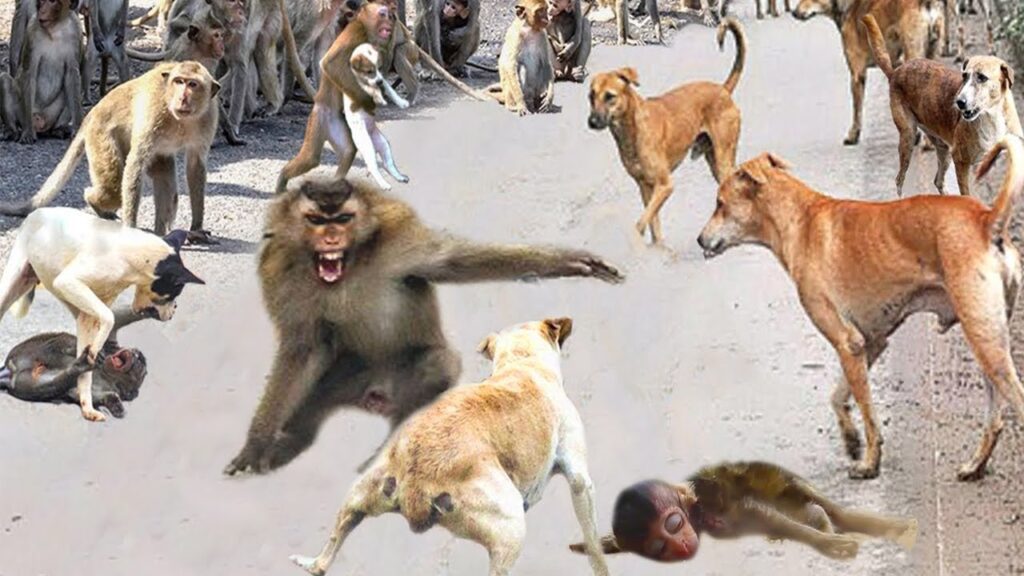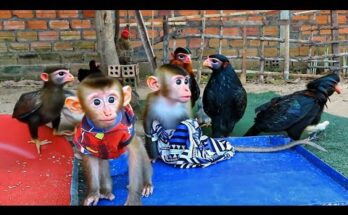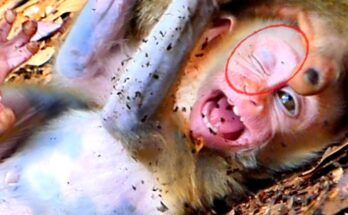
This rare and dramatic event unfolded in the rugged outskirts of a rural village bordering the savannah, where a troop of baboons launched a coordinated and aggressive attack on a group of local dogs. The incident, captured partially by shocked onlookers, left many witnesses stunned—not just by the violence, but by the purpose behind it.
Just days before the ambush, tragedy had struck the baboon troop. A few of their young and one adult had been killed in a brutal encounter with a pack of semi-wild village dogs. The dogs, often left to roam and fend for themselves, had chased the baboons near a waterhole. In the chaos, several defenseless members of the troop were cornered and torn apart.
The scene was devastating. The baboons mourned their dead—something researchers have long observed in primates. Mothers carried the lifeless bodies of their babies for hours. Others let out haunting wails and cries, a display of emotional pain rarely seen outside the human species. It was a quiet kind of grief—one that hung heavily in the trees for days.
But the silence didn’t last. It was replaced by rage.
Three days after the attack, at dawn, the troop returned—not to grieve, but to retaliate. This time, they weren’t just foraging for food or passing by. They came down from the hills with a terrifying focus. Moving in groups, older males and even some fierce females charged directly at the dogs near the village edge.
The dogs, caught off guard and clearly outnumbered, scattered. But the baboons were swift and violent. They used their sharp fangs and strong limbs to strike with lethal force. Some dogs tried to defend, others tried to flee, but the baboons chased them relentlessly. It wasn’t just instinct—it was fury.
Witnesses described the attack as shocking and precise. “It was like they knew exactly what they were doing,” one villager said. “They weren’t just protecting themselves—they were getting revenge.”
By the time the baboons retreated into the forest, several dogs lay injured or dead. The village fell into stunned silence. People who had once seen baboons as mischievous thieves or noisy pests now viewed them with a new kind of respect—and fear.
Experts who reviewed the footage and eyewitness reports say this behavior, while rare, is not unprecedented. Baboons are known for their intelligence, strong social bonds, and memory. They can distinguish individual faces—even across species—and they often remember those who threaten or harm their group.
“This wasn’t a random act of violence,” said a wildlife behaviorist. “This was targeted. It was emotional. It was retaliation.”
While tragic, this incident opens deeper discussions about human impact on wildlife territories. The growing overlap between wild habitats and human settlements is forcing animals like baboons and dogs into unnatural conflict—with deadly consequences.
In the end, the baboons’ message was clear: they would not forget. They would not forgive.


